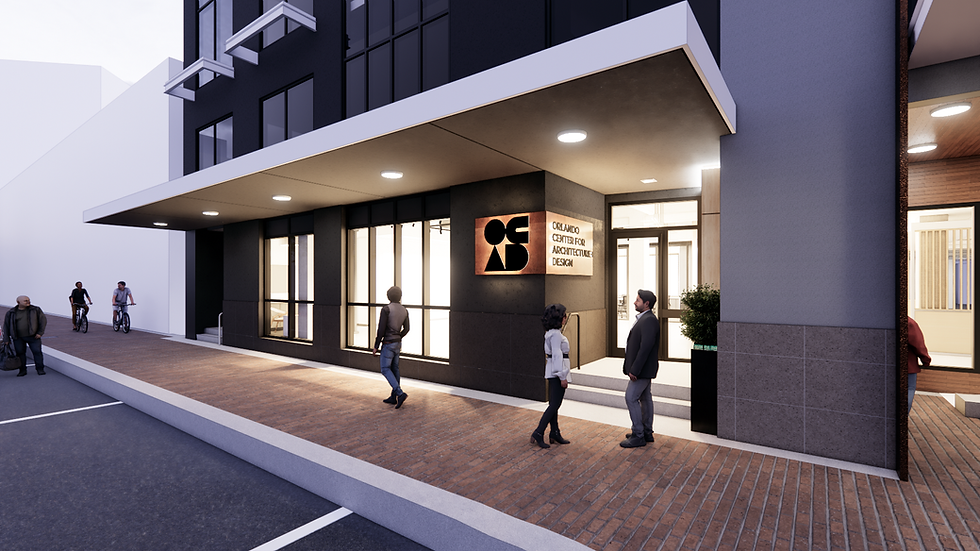Meet Cindy Meadows—urban planner turned abstract artist. ARTIST SPOTLIGHT
- Melanie Crownover

- Sep 13, 2022
- 4 min read

Cindy Meadows, urban planner turned abstract artist.
Cindy Meadows has always had a keen eye for form, color, texture, and space. After 20 years in the corporate workplace as an urban planner, Cindy retired and followed her heart to create art full-time from her studios in Orlando and Santa Rosa Beach, Florida. She has entered several pieces in this year’s OFA Art Show. Here’s her story of creativity coming full circle.
In your bio, you indicated that you began creating art at an early age and that your father was an architect. Can you tell us about your creative life growing up with an architect and how that ignited your passion for art and influenced your decision to become an urban planner?
Growing up in Tallahassee, Florida, I was fortunate enough to be surrounded by a talented family. My father, Edward Lee Meadows, Sr., was an Architect whose career started in an office in Granada Court in Winter Park, FL in the early 50’s. His work included many of the small mid-century modern homes on Corrine Drive and Temple Drive. I grew up in a mid-century modern home with art and glass ceramics of the period. My father designed homes, churches, hospitals and even a clinic in Belgian Congo (now the Democratic Republic of the Congo).

Cindy was inspired by her father, Edward Lee Meadows, Sr. (right), shown here in the Belgian Congo (now The Democratic Republic of the Congo) where he designed a clinic. An Architect, he designed homes, churches, hospitals.
As many architects today realize, architecture was without computers, and architects prepared all the designs and renderings by hand. I visited my father’s office regularly and sometimes he brought drawings home. I guess it was in the genes because I started drawing at around age 8 using his tracing paper, T-squares, triangles, rulers, pencils, lettering sets and many other instruments used back in the pre-computer age. I began illustrating scrapbooks in high school, all in pencil on paper.
When I went to Florida State University, my only real selection of majors was Business Management which did not lend itself to “creativity” at the time. After graduating and working in various business positions, I applied to the University of Florida School of Architecture and ended up in the same building where my father studied after WWII; around 1946-1950. Architecture was a four-year degree in those days. As I was studying architecture, the dean of the newly formed school of Urban and Regional Planning recruited me to get a master’s degree in URP. Urban Planning sparked my creativity because it involved not only design, but geography, sociology, archaeology, demographics. Plus, the large URP building had a state-of-the-art mainframe computer where we could output our work. I graduated in two years and was working in the Orlando area for various Engineering firms designing communities, neighborhoods, and villages. It was a very creative fulfilling career.
Were you able to find time to paint/create during your 20 years as an urban planner? And what made you decide to pursue your art full time?
Fast forward to the year 2000, and I found myself living in a very artistic and architecturally beautiful part of the Florida panhandle where I pursued art part-time while serving as a county commissioner for 8 years. I retired in 2016 and began a full-time pursuit of becoming an abstract artist. I always wanted to be an artist but—before 2016—time, life, jobs, and finances got in the way. Retirement allows me to pursue art.

Cindy Meadows pursued her art part-time while serving as County Commissioner for 8 years in the Florida Panhandle.
Clearly from your beautiful abstract work, nature inspires you. Can you take us through your artistic process from inspiration to completion?
I am inspired by nature and all things beautiful. Whenever I am in the natural world, I see paintings in my mind’s eye and photograph scenes, elements and colors that spark joy. I begin with picking a color palette and applying paints and mediums with total abandon, using large stiff brushes, scrapers, trowels, brayers, palette knives of all sizes, pens, pastels, and oil crayons. I then photograph the painting and let it sit for several days, sometimes weeks. As I see it multiple times, I see parts that need tweaking, or a color that needs to be added or removed, or forms and shapes that need adjusting. I know when a piece is finished because it pleases my mind's eye. I’ve found one important behavior in painting is to know when to “stop painting” and not overpaint your creation.
Do you have a favorite piece? Tell us about it.
I have several favorites. “Caribbean” on canvas and “Serengeti” on watercolor paper. I love painting places I’ve visited wanting to recapture that view or emotion. The aquamarine colors of the Caribbean, US Virgin Islands, connect all my neurons instantly. And to see the plains of Kenya, Africa fulfilled a longtime dream of mine. Traveling the world and painting is my dream job.

“Caribbean” (Sold) Acrylics on 36”x38” canvas.

“Serengeti” 20”x30” watercolor.
You can learn more about Cindy Meadows and view her work on her website at studioq202.com. The 4th Annual OFA Art Show will be October 26th & 27th at the Orlando Museum of Art. Sponsorships are still available. Learn more here.



